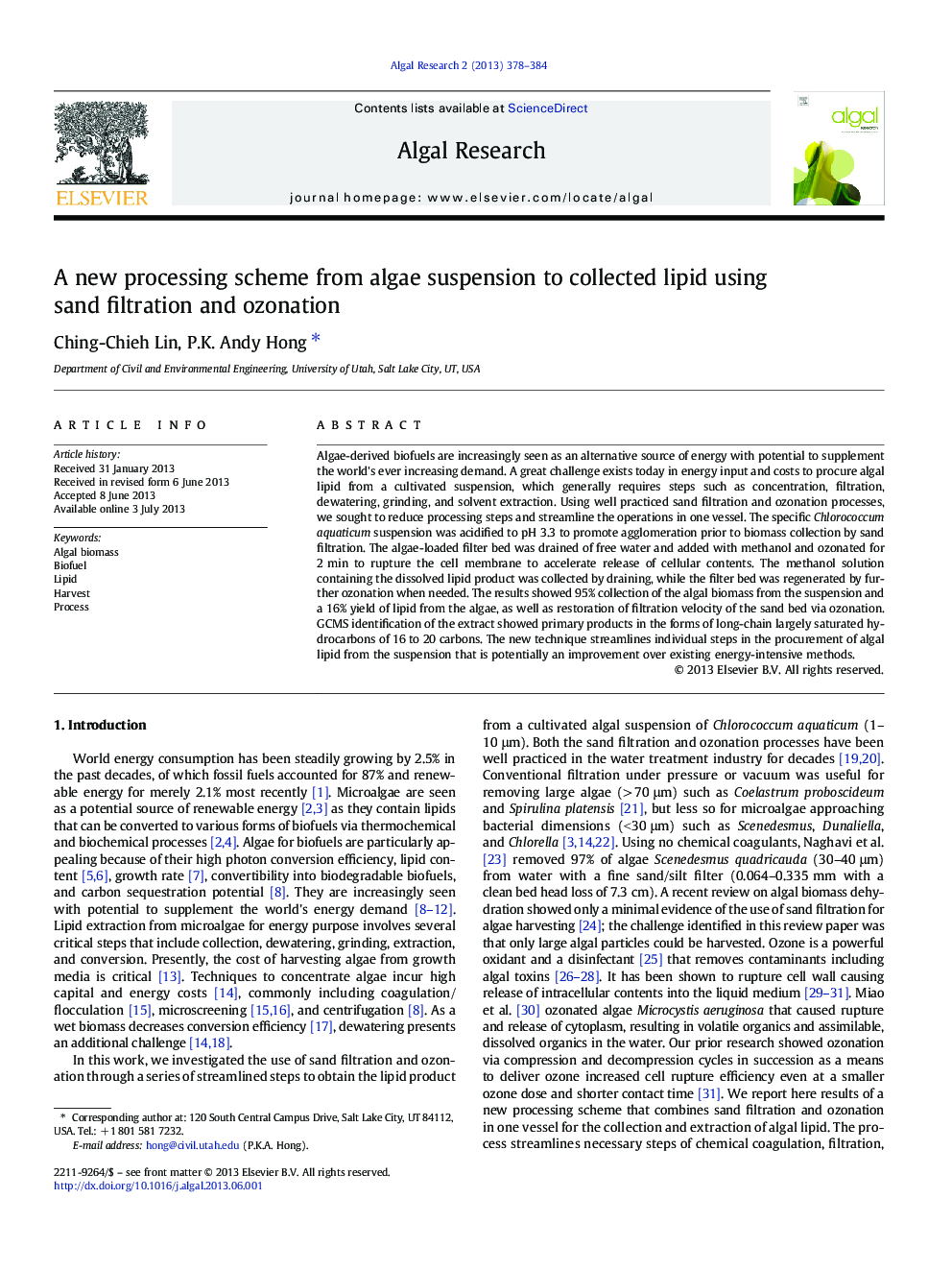| Article ID | Journal | Published Year | Pages | File Type |
|---|---|---|---|---|
| 10687553 | Algal Research | 2013 | 7 Pages |
Abstract
Algae-derived biofuels are increasingly seen as an alternative source of energy with potential to supplement the world's ever increasing demand. A great challenge exists today in energy input and costs to procure algal lipid from a cultivated suspension, which generally requires steps such as concentration, filtration, dewatering, grinding, and solvent extraction. Using well practiced sand filtration and ozonation processes, we sought to reduce processing steps and streamline the operations in one vessel. The specific Chlorococcum aquaticum suspension was acidified to pHÂ 3.3 to promote agglomeration prior to biomass collection by sand filtration. The algae-loaded filter bed was drained of free water and added with methanol and ozonated for 2Â min to rupture the cell membrane to accelerate release of cellular contents. The methanol solution containing the dissolved lipid product was collected by draining, while the filter bed was regenerated by further ozonation when needed. The results showed 95% collection of the algal biomass from the suspension and a 16% yield of lipid from the algae, as well as restoration of filtration velocity of the sand bed via ozonation. GCMS identification of the extract showed primary products in the forms of long-chain largely saturated hydrocarbons of 16 to 20 carbons. The new technique streamlines individual steps in the procurement of algal lipid from the suspension that is potentially an improvement over existing energy-intensive methods.
Related Topics
Physical Sciences and Engineering
Energy
Renewable Energy, Sustainability and the Environment
Authors
Ching-Chieh Lin, P.K. Andy Hong,
